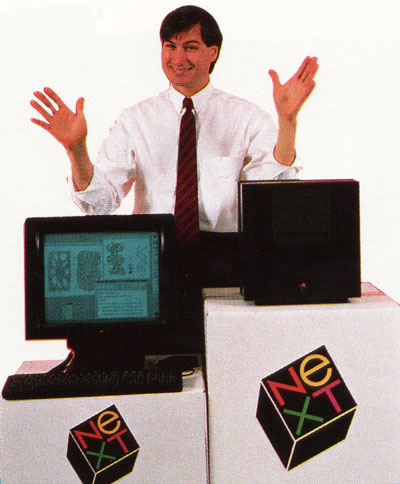
 |
Search | FAQ | US Titles | UK Titles | Memories | VaporWare | Digest | |||||||
| GuestBook | Classified | Chat | Products | Featured | Technical | Museum | ||||||||
| Downloads | Production | Fanfares | Music | Misc | Related | Contact | ||||||||
| CED in the History of Media Technology | ||||||||||||||

Not long after being ousted from Apple Computer, Steve Jobs formed NeXT Inc. with the intention of designing a next-generation of computer targeted at the education market. On October 12, 1988 the NeXT cube was introduced with a number of innovative features. These included the 12-inch black magnesium cube itself, as well as a 256MB read/write magneto optical drive, a Motorola M56001 digital signal processor, a graphical UNIX operating system named Mach, and an object-oriented application development environment.
Despite massive publicity at its introduction, the $6500 system did not initially have a color display, and sales were rather poor. NeXT later introduced a reduced-cost model shaped like a slab, but eventually withdrew from the hardware business, concentrating fully on software. In 1996 Apple Computer purchased the remnants of NeXT, which brought Steve Jobs back to Apple and resulted in UNIX becoming the underlying operating system for Macintosh OS X. The NeXT's greatest claim to fame may be its use by Tim Berners-Lee for hyperlinking academics across the internet. This interface went on to become the World Wide Web.